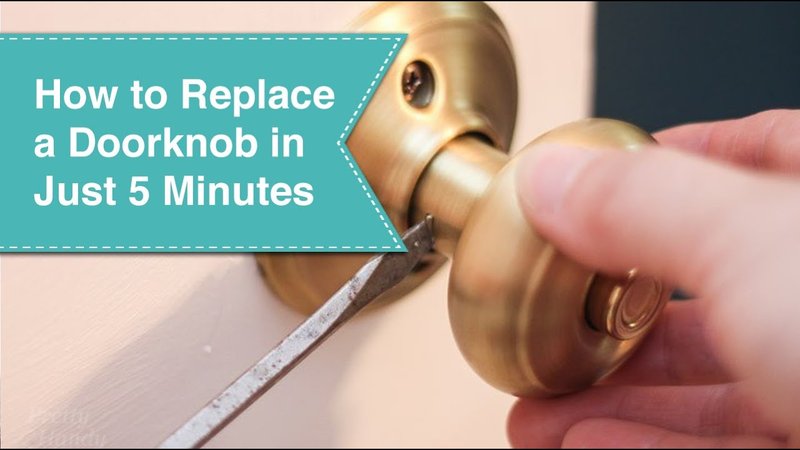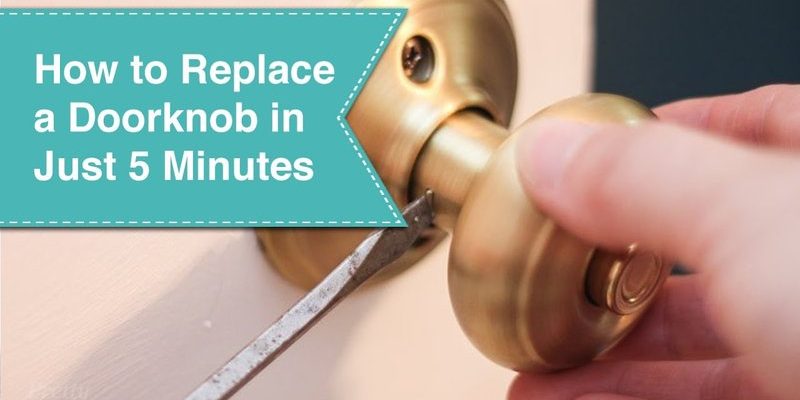
When we think about door knobs, we often take their smooth operation for granted, much like how we expect a car to start when we turn the key. But when that routine gets interrupted, it can be downright annoying. The good news? Most door knob problems are easily fixable. Whether you have a standard round knob or a fancy lever handle, I’ll walk you through practical steps to get that knob turning with ease.
Understanding the Problem: Why Is My Door Knob So Tight?
You might be wondering what could be causing your door knob to feel like it belongs to a bank vault. The truth is, several factors could contribute to this issue. Often, it’s something as simple as a loose screw or misplaced parts. Here are a few common reasons:
- Misalignment: Over time, doors can shift and settle, making the latch mechanism misaligned with the strike plate.
- Dry or Worn Components: The inside mechanisms can become dry or worn out, making it hard to turn the knob.
- Rust or Corrosion: If your knob is made from metal, it could be experiencing corrosion, especially in moisture-prone areas.
Identifying the exact reason is the first step in this troubleshooting journey. You could think of it like a detective story where the door knob is the culprit, and you have to gather clues to get to the bottom of it.
Gathering Your Tools
Before you jump into fixing that stubborn knob, let’s gather a few essential tools. Think of this as packing for a camping trip; you don’t want to get out there and realize you forgot the tent.
- Screwdriver: A standard or Phillips screwdriver, depending on your knob’s screws.
- Lubricant: A silicone-based lubricant or WD-40 can work wonders on the internal mechanisms.
- Allen Wrench: Some knobs require an Allen wrench for adjustment.
- Cleaning Cloth: You’ll want this to wipe off any dust or grime.
Having these tools on hand will make the process smoother. It’s like having the right ingredients ready before cooking a meal—you’ll be much more efficient.
Step-by-Step Troubleshooting
Now that you have your tools, let’s get into the nitty-gritty of fixing a door knob that’s too tight to turn. Follow these steps to identify and solve the issue.
1. Inspect the Door Knob
Start by visually inspecting the door knob and the surrounding door area. Check for screws that may have come loose or anything that looks out of place. If the knob appears misaligned with the latch mechanism, you’ll need to adjust it.
2. Tighten Loose Screws
Using the screwdriver, gently tighten any visible screws on the knob. Sometimes, simply tightening these screws can significantly improve the knob’s operation. Think of it as securing a loose wheel on a bike—it needs to be stable to function correctly.
3. Lubricate the Mechanism
If tightening screws doesn’t help, the next step is to lubricate the internal components. Spray a small amount of your lubricant into the keyhole and around the base of the knob, then turn the knob several times to distribute the lubricant evenly. You might notice a huge difference, similar to how oil makes a squeaky hinge quiet.
4. Realign the Door
If the knob is still tight, the door itself might be misaligned. Check if the door is hanging correctly in the frame. If it appears to be sagging, try adjusting the hinges by tightening their screws or adding shims. This adjustment can often relieve pressure on the knob’s latch.
When to Replace the Door Knob
After going through these steps, you might still find that your door knob is tighter than it should be. In such cases, it may be time to consider replacement. Here are a few signs that a replacement is in order:
- Consistent Stiffness: If lubrication doesn’t help and tightening screws yields no results.
- Physical Damage: Cracks or chips in the knob or mechanism are indicators of wear.
- Outdated Design: Sometimes, it’s not just about function; style matters too. An upgrade can enhance your space.
Replacing the knob can seem daunting, but it’s often straightforward. You simply remove the existing knob and install a new one, following the manufacturer’s instructions.
Preventing Future Problems
Once you’ve tackled the immediate issue, you’ll want to avoid a repeat performance. Consider these preventive tips:
- Regular Maintenance: Clean and lubricate your door knobs every few months.
- Watch for Changes: Be mindful of any new stiffness or resistance over time.
- Quality Matters: Invest in a quality knob that suits your home to minimize issues down the line.
Taking these simple precautions can extend the life of your door knobs and keep them functioning smoothly.
Fixing a door knob that’s too tight to turn doesn’t have to be a daunting task. With a little patience and the right tools, you can often troubleshoot and resolve the issue yourself. If all else fails, don’t hesitate to replace the knob. Remember, a working door knob is essential for your home’s functionality and security. So, keep those knobs turning smoothly, and let yourself in without a hitch. With the right care, that stubborn knob will be a thing of the past.
